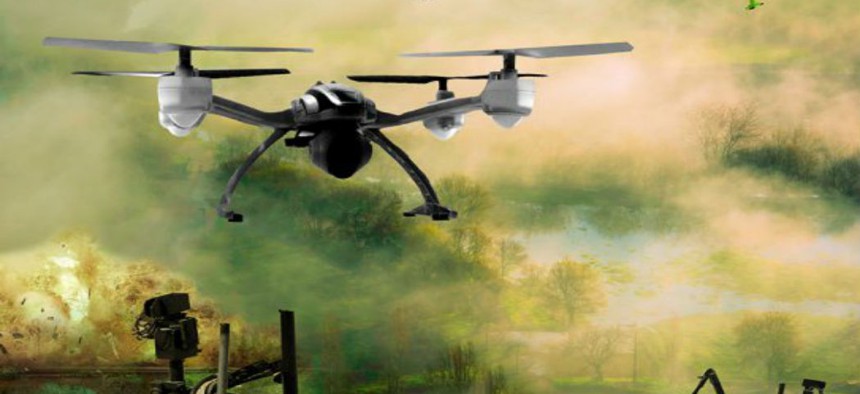
Preparing for the internet of battlefield things
The Army Research Lab is exploring technology that enhances collaboration between autonomous agents and human warriors on the battlefield.
Even as developers are struggling with how to integrate the various pieces of the emerging internet of things, the federal government is investing millions for a five-year brainstorming project to explore how to develop and secure connected devices on the battlefield .
The Army Research Lab recently awarded $25 million to the Alliance for Internet of Battlefield Things Research on Evolving Intelligent Goal-driven Networks (IoBT REIGN) to develop new predictive battlefield analytics.
“It is a really big project,” said Tancréde Lepoint, computer scientist and cryptographer at SRI International and a member of the IoBT REIGN team. In all, Lepoint said, 20 researchers from six universities and SRI are involved in the project, along with an expected 10 researchers from the Army Research Lab.
According to an SRI announcement, “The IoBT will connect soldiers with smart technology in armor, radios, weapons, and other objects, to give troops ‘extra sensory’ perception, offer situational understanding, endow fighters with prediction powers, provide better risk assessment, and develop shared intuitions.” The project will also explore development of collaboration between autonomous agents and human warriors on the battlefield.
“One scenario could be to have smarter ammunition,” Lepoint said. Smarter ammunition would allow commanders to configure it to target only, say, condemned buildings. “If you're tempted to fire on something that is not in the category, it would not fire,” he said. Similarly, demolition charges might be configured not to go off if sensors detect that humans are nearby.
“It is not about [having devices] pulling the trigger instead of the human,” Lepoint said. “It is about letting the human have a better understanding of the full environment.”
Lepoint’s primary work with the group is on securing what is becoming an increasing complex battlefield using a combination of data-driven inductive learning and deductive reasoning techniques.
“We need to think about adversaries from the design of the algorithm and from everything that we develop,” he said. “We need to focus on how to design algorithms to resist malicious adversaries.”
In addition to encrypting communications, he said, the team wants to develop algorithms that can detect when malicious data is being inserted. “We need to account for the fact that there will be conflicting and deceptive data received by those algorithms, so let's design them so that if you get enough data you will still be able to carry out your mission,” Lapoint said.
Lapoint acknowledged that the project is an unusual one in that it doesn’t have any specified deliverables. “This is a collaborative research alliance,” he said. “It's brainstorming over five years.”
In addition to researchers from the Army Research Lab and SRI, the project includes the University of Illinois at Urbana-Champaign, Carnegie Mellon University, University of California, Berkeley, University of California, Los Angeles, University of Massachusetts and University of Southern California. The funding covers the first five years of a potential 10-year effort.